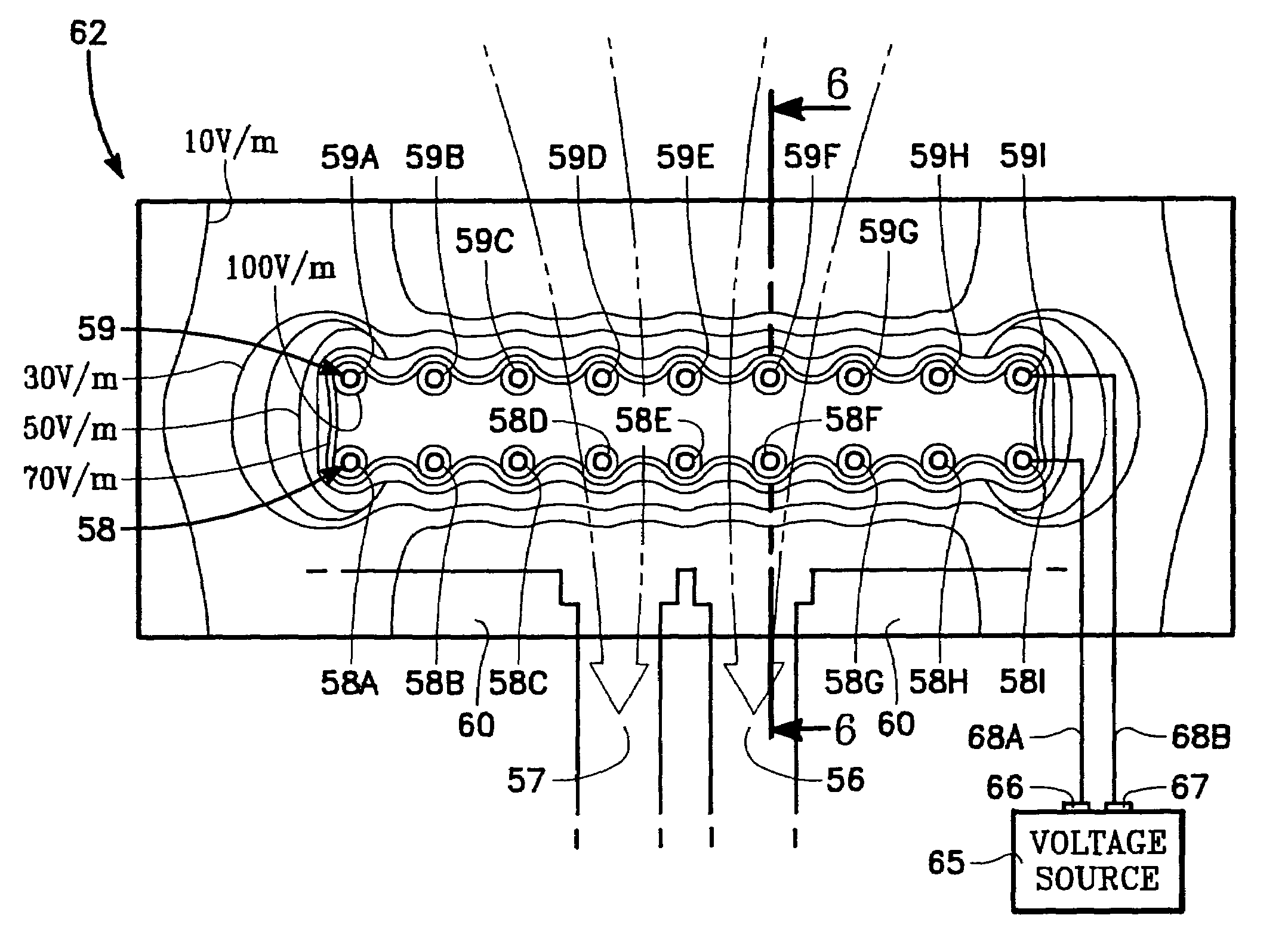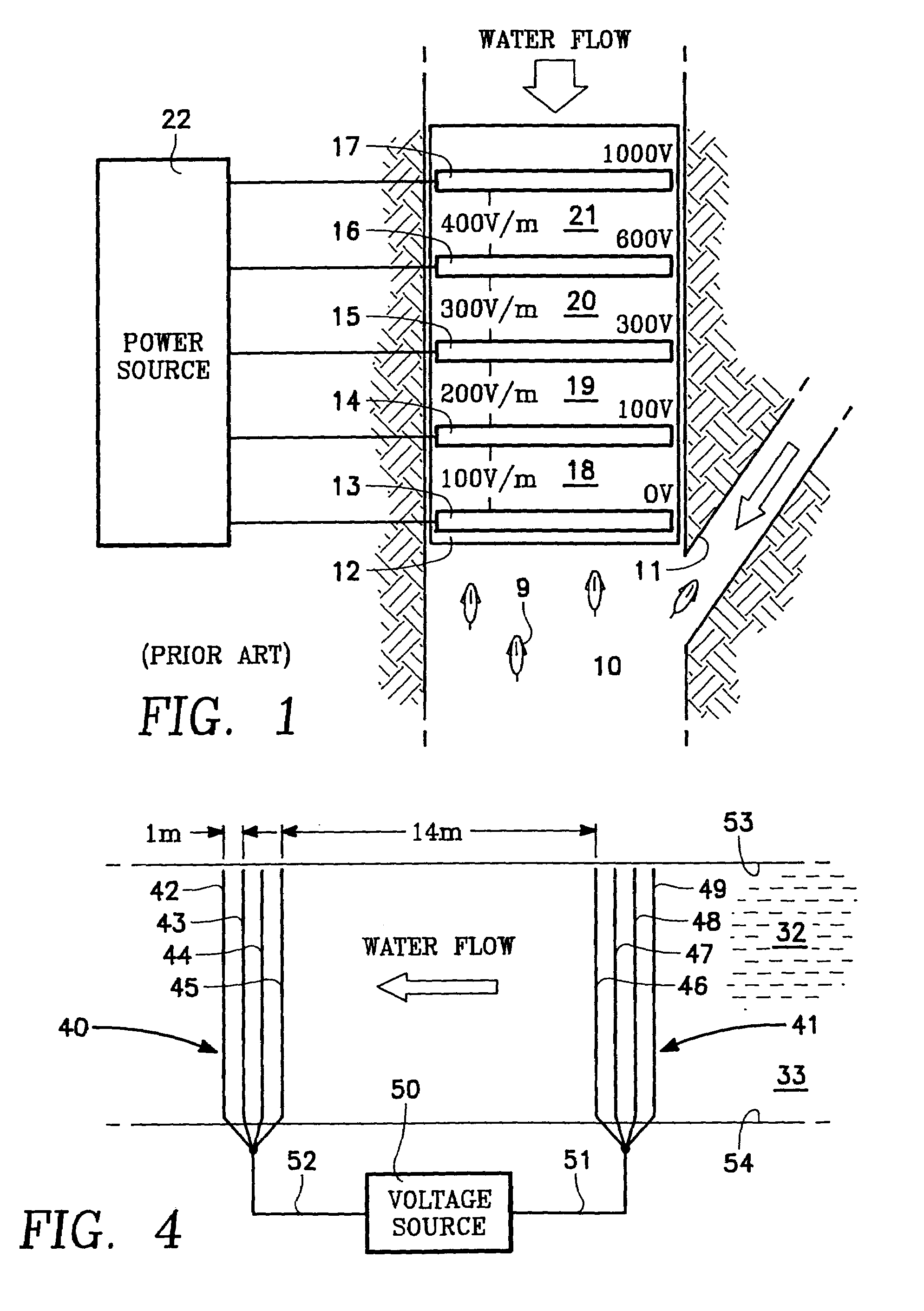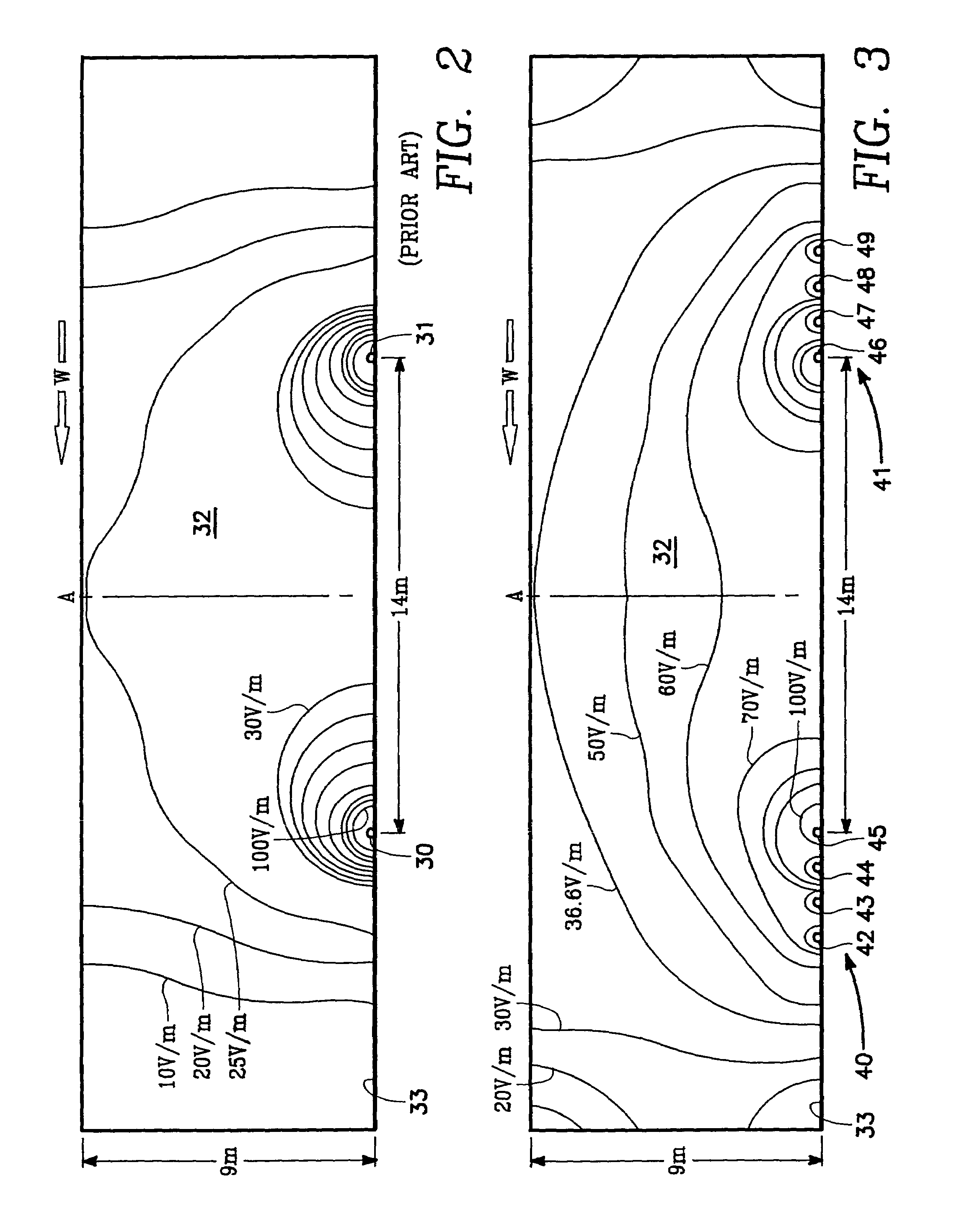Electric fish barrier for water intakes at varying depths
a technology of water intake and electric fish, applied in pisciculture and aquaria, hydraulic engineering apparatus, construction, etc., can solve the problems of frequent replacement, premature eroded copper cables, large fish reacting so violently in their attempt to change direction, etc., to achieve the effect of controlling the motion of fish
- Summary
- Abstract
- Description
- Claims
- Application Information
AI Technical Summary
Benefits of technology
Problems solved by technology
Method used
Image
Examples
Embodiment Construction
[0046]FIGS. 3 and 4 illustrate an embodiment of the invention for use in conjunction with a body of water such as a river, stream, or reservoir. As used herein, the term “river” is used generically, and can refer to any moving body of water, including, but not limited to, a river, stream, or a moving area of water within a reservoir leading to a water intake. Although applications herein are directed to moving water having an attraction flow, those skilled in the art will recognize that the principles described herein can be readily applied for use in conjunction with a stationary body of water. A first array 40 of multiple electrodes 42, 43, 44, 45 are electrically connected at a first common voltage and are spatially distributed over a select area in order to expand a range of a voltage field. A second array 41 of multiple electrodes 46, 47, 48 and 49 are electrically connected at a second common voltage and are also spatially distributed over a select area in order to expand a ra...
PUM
 Login to View More
Login to View More Abstract
Description
Claims
Application Information
 Login to View More
Login to View More - R&D
- Intellectual Property
- Life Sciences
- Materials
- Tech Scout
- Unparalleled Data Quality
- Higher Quality Content
- 60% Fewer Hallucinations
Browse by: Latest US Patents, China's latest patents, Technical Efficacy Thesaurus, Application Domain, Technology Topic, Popular Technical Reports.
© 2025 PatSnap. All rights reserved.Legal|Privacy policy|Modern Slavery Act Transparency Statement|Sitemap|About US| Contact US: help@patsnap.com



